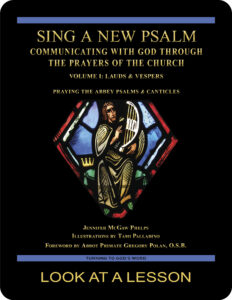peace
 In the tenth chapter of the Gospel According to Luke (NABRE), Jesus sends out 72 disciples to deliver a message of peace. Throughout the Old and New Testaments, the concept of peace is used in a variety of ways and has many meanings—ranging from the absence of war to harmony between neighbors and even to lack of internal strife. What exactly is Jesus intending with his message?
In the tenth chapter of the Gospel According to Luke (NABRE), Jesus sends out 72 disciples to deliver a message of peace. Throughout the Old and New Testaments, the concept of peace is used in a variety of ways and has many meanings—ranging from the absence of war to harmony between neighbors and even to lack of internal strife. What exactly is Jesus intending with his message?
The Greek word εἰρήνη (eirene) that is translated as peace comes from a verb that means “to join.” As such, peace can be conceptualized as something that brings unity and eliminates division. Intuitively, this makes sense. There is no conflict where there is no division. From the point of view of spreading Jesus’ kingdom, the idea of peace suggests a further point. Jesus is calling for union of all people with God. This alone will remove division and conflict on earth.
Where is there division in your life, and what causes it? Where might God be calling you to bring peace to yourself or others?
you also may like Volume I of our Psalms study
 Sing a New Psalm: Communicating with God Through the Prayers of the Church—Volume I: Lauds & Vespers provides an in-depth look at Psalms prayed in morning and evening liturgies. (Volume II, set for publication in 2024, looks at Vigils, Day Prayer & Compline.) The study is based on The Abbey Psalms and Canticles, a translation prepared by the Benedictine monks of Conception Abbey and published by the United States Conference of Catholic Bishops (USCCB). Click on the book’s cover to view a sample lesson.
Sing a New Psalm: Communicating with God Through the Prayers of the Church—Volume I: Lauds & Vespers provides an in-depth look at Psalms prayed in morning and evening liturgies. (Volume II, set for publication in 2024, looks at Vigils, Day Prayer & Compline.) The study is based on The Abbey Psalms and Canticles, a translation prepared by the Benedictine monks of Conception Abbey and published by the United States Conference of Catholic Bishops (USCCB). Click on the book’s cover to view a sample lesson.
 Click on the picture of the statue of Moses with horns (above) to learn more about Lost in Translation. A new entry is archived each Monday. Contact us to receive Lost in Translation by email every week. You may use any of the contact links on our website to ask Matthew a question.
Click on the picture of the statue of Moses with horns (above) to learn more about Lost in Translation. A new entry is archived each Monday. Contact us to receive Lost in Translation by email every week. You may use any of the contact links on our website to ask Matthew a question.
